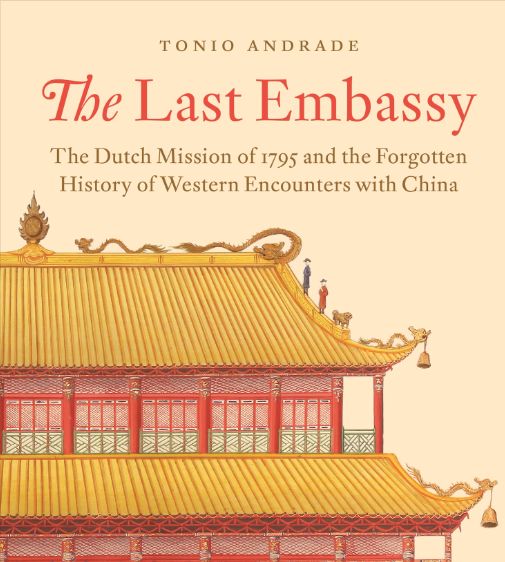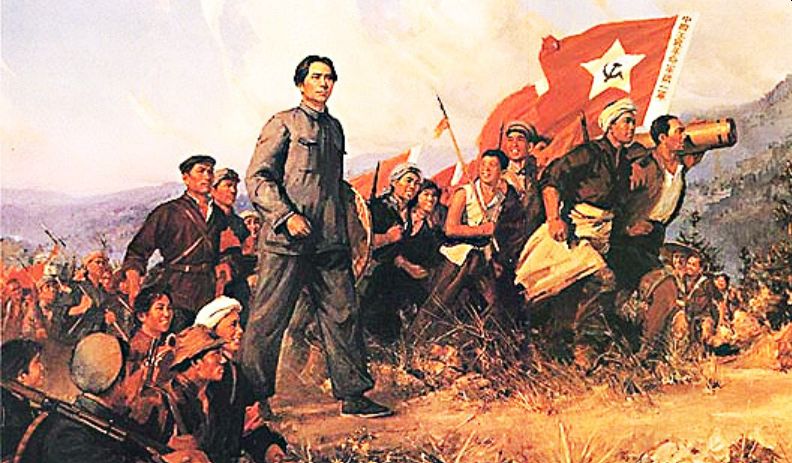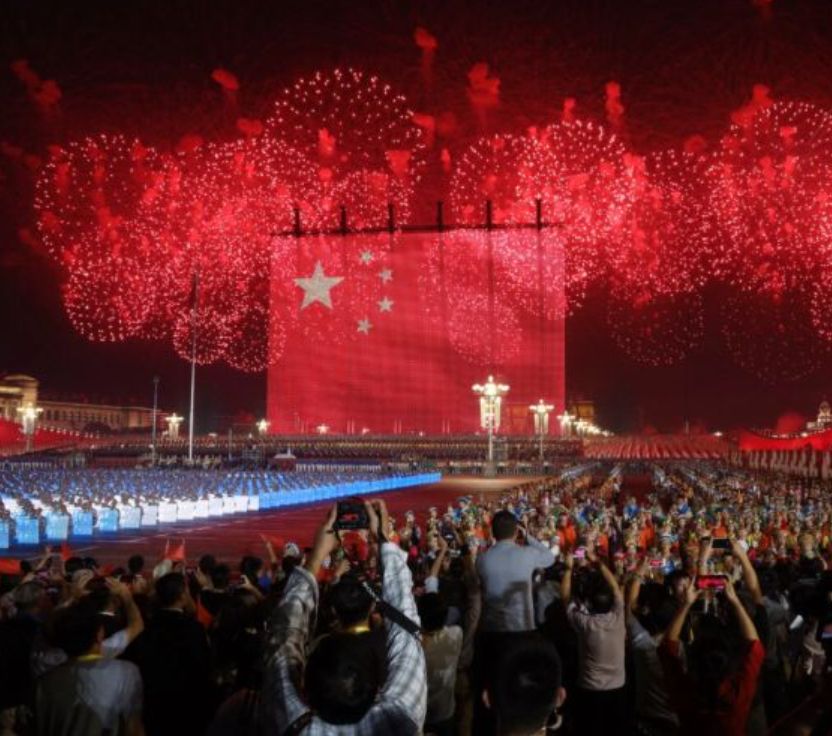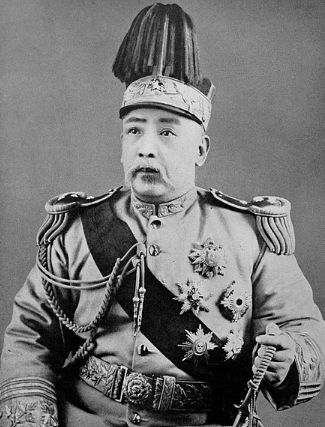By Eric Vandenbroeck
and co-workers
China’s Past And Xi’s Future
Yesterday, China
President
Xi refused to shake hands with Olaf Scholz, the chancellor of Germany.
A little joke was made suggesting that as the new emperor, Xi may have wanted
Scholz to Kowtow.

To explain the joke,
the importance of kowtowing or kowtow, among others, is
central to "The Last Embassy" by (the experienced Sinologist) Tonio Andrade, whose book explains the need for foreigners
who submitted themselves to the emperor’s presence needed
to kowtow, thus confirming that Qianlong was indeed the ruler of ‘all
under heaven’ (tianxia).
His status as the emperor of the central state, the 'zhong guo', had been reinforced by the
kowtow of the visitors from abroad. They confirmed the legitimacy of the
emperor, his empire, his officials, and their Confucian ideology. The ruler of
China claimed the Mandate of Heaven to rule all mankind.
The Long
March

Xi’s first big public
move after the National People’s Congress his effective coronation
was to travel to Yan’an,
in northwest China, arguably the most critical site in the CCP’s history. This
is where Mao Zedong led his retreating forces at the end of the Long March, rebasing his movement there after a
series of military routs at the hands of the Nationalists and plotting what
would become the eventual triumph of his revolution. Yan’an
is also where all doubts disappeared about Mao’s utter preeminence among the
Chinese communists. There, his cult of personality fully flowered, and a
tradition of treating him as nearly infallible took root. For years afterward,
it was Mao, seemingly alone, who determined what was red or black, as the
Chinese said—meaning what was left and what was right, who was up or down, in
or out. With Mao’s decisions, often brutally implemented, the fates of
innumerable people were decided.
For some experts,
this confirmed that Xi was the most powerful leader China had seen since Mao.
But whatever one makes of him, Mao was indisputably a revolutionary
whereas Xi has put himself above the party, even though he is merely a sort of
bureaucrat par excellence who’s played the bureaucratic game to its final end.

Few expected that
this would mean a return to some of Mao’s most extreme policies, including
radical egalitarianism, economic autarky, or economic isolation from the
capitalist world—not to mention the chaos and disaster of movements such as the
Great Leap Forward and Cultural Revolution, each of which destroyed millions of
Chinese lives and created economic devastation that took years to repair.
Yinzhen ruled China under the title of the Yongzheng emperor during the Qing dynasty in the early 18th
century. Today, although many scholars believe that he was indeed his father’s
intended successor, disputes and contests among Yinzhen’s
brothers and their backers ensued, partly because Yinzhen
was neither the oldest nor considered the ablest of the possible male heirs.
Insecure over perceptions of his legitimacy, with rumors saying that he had
forged his father’s will, the Yongzheng emperor had
some of his brothers put in prison, where several died.
Yongzheng forbade Chinese scholars from forming
associations or poetry societies because these could become political. And
again also looking for echoes of Xi Jinping’s crackdown on dissent and his
public morality
campaigns: cracking down on any difference in society. This echoes the anxieties
of Yongzheng, who was quite worried about being seen
as illegitimate. For Xi, the source of anxiety may stem from his power play
itself, having overturned the rules of his succession both this time and
indefinitely into the future.
The degree of the institutionalization
of the succession rules dates from Deng
Xiaoping, who succeeded Mao and devised a set of informal rules that
established a two-term, or 10-year, a limit on leading the Communist Party.
Deng lorded it over his successor, Jiang Zemin, even after surrendering all his
ruling titles. Jiang did much the same with his successor.
In Chinese tradition,
much more common than rules-bound leaders have been long-term emperors,
generalissimos, and, you know, Chairman Mao. Anyone who did not fit this mold
is pretty much forgotten. But Nobody is ever going to forget Mao or Chiang Kai-shek, or the Qianlong mentioned
above, the ruler of ‘all under heaven who, as detailed in Tonio Andrade's The Last Embassy, ruled China for 61
years.
Yuan Shikai in 1915

As described by us
in China's new map, the ‘Provisional Constitution’
written by Sun Yat-sen’s allies immediately after the
revolution and approved by the freshly-installed president, Yuan Shikai, on 11 March 1912, set out in relatively precise
detail what it believed the territory of the Republic should be. In effect, it
said that the new state inherited the boundaries of the Qing Great State as
they stood when the revolution broke out. Article 3 stated simply that ‘The
territory of the Chinese Republic consists of 22 provinces, Inner and Outer
Mongolia, and Tibet. The choice of ‘22’ provinces was highly significant since
Taiwan was the twenty-third. Given that the constitution text was still laying
claim to Outer Mongolia, despite its declaration of independence three months
earlier, Tibet, despite the ongoing insurrection there, and Xinjiang, despite
its de facto independence at the time, this seems to be clear proof that the
Republic had formally abandoned any claim to Taiwan.
Chancellor Angela
Merkel (who, while all smiles, even others claimed it was a gaffe probably knew
well about the hidden
message gave her counterpart, Chinese President Xi Jinping, a
1735 map of China made by esteemed French cartographer Jean-Baptiste
Bourguignon d’Anville (1697–1782). The map, part of a
series by d’Anville, was based partly on information
gleaned by Jesuit missionaries. It was well-regarded at the time and
republished for decades to come.

The 1735 d’Anville map shows “China proper” as a landmass separate from
Xinjiang, Tibet, Mongolia, and Manchuria. The island of Hainan is drawn in a
different color, as is Taiwan. This depiction is utterly at odds with how
history is taught here.
Chinese students
learn that these areas are inalienable parts of China and have been for a long time.
One netizen described the map as a “slap” from Merkel. "We always
say some regions are inalienable parts of China since ancient times, but Merkel
told us that even in the 18th century, those regions still did not belong to
China.”
Instead, Xi
Jinping's People's Republic of China (PRC) has added Taiwan reintroducing
a new allegiance to the unchanging never-never
land of a timeless past Xi claims to be eternal and perpetually “Chinese.”
Yesterday, a New book
also presented the Xi party’s rationale for adding ‘opposing and containing
Taiwan independence’ to the constitution last month. It says some forces in US
‘try their hardest to contain and suppress China, using Taiwan to subdue China.’
Only by unifying with
Taiwan “can Taiwan avoid being occupied by foreign countries again, and
can we defeat the attempts of external forces to contain China and
safeguard national sovereignty, security and development interests.”
For updates click hompage here